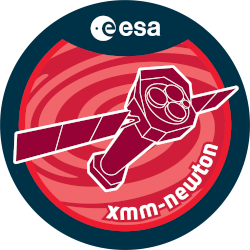

| Proposal ID | 082125 |
| Title | A systematic study of z>1 XXL galaxy clusters |
| Download Data Associated to the proposal | https://nxsa.esac.esa.int/nxsa-sl/servlet/data-action-aio?obsno=0821250401 |
| DOI | https://doi.org/10.5270/esa-y8qqwg2 |
| Principal Investigator, PI | Dr Ben Maughan |
| Abstract | The XXL survey has constructed the most pure and reliable sample of distant(z>1) X-ray-selected clusters of galaxies, thanks to its well-calibratedselection function and our complete Chandra follow-up to identify anycontaminating point sources. In this proposal we initiate a programme of deeperXMM observations of these clusters to measure their properties and evolution,examine their morphologies, compare them with distant SZE-selected clusters, andprobe the parameter space where distant eROSITA clusters will be found. Werequest 268 ks to observe three clusters, completing an initial sample of sixChandra-validated z>1 XXL clusters. |
| Publications |
|
| Instrument | EMOS1, EMOS2, EPN, OM, RGS1, RGS2 |
| Temporal Coverage | 2018-05-13T03:06:36Z/2019-02-06T03:37:02Z |
| Version | 17.56_20190403_1200 |
| Mission Description | The European Space Agencys (ESA) X-ray Multi-Mirror Mission (XMM-Newton) was launched by an Ariane 504 on December 10th 1999. XMM-Newton is ESAs second cornerstone of the Horizon 2000 Science Programme. It carries 3 high throughput X-ray telescopes with an unprecedented effective area, and an optical monitor, the first flown on a X-ray observatory. The large collecting area and ability to make long uninterrupted exposures provide highly sensitive observations. Since Earths atmosphere blocks out all X-rays, only a telescope in space can detect and study celestial X-ray sources. The XMM-Newton mission is helping scientists to solve a number of cosmic mysteries, ranging from the enigmatic black holes to the origins of the Universe itself. Observing time on XMM-Newton is being made available to the scientific community, applying for observational periods on a competitive basis. |
| Creator Contact | https://www.cosmos.esa.int/web/xmm-newton/xmm-newton-helpdesk |
| Date Published | 2020-02-19T23:00:00Z |
| Last Update | 2025-01-27 |
| Keywords | "parameter space", "xxl clusters", "complete chandra", "initial sample", "xxl survey", "deeper xmm", "chandra validated z", "distant z", "distant sze", "XMM", "distant erosita cluster", "xxl galaxy clusters", "reliable sample", "calibrated selection function" |
| Publisher And Registrant | European Space Agency |
| Credit Guidelines | European Space Agency, Dr Ben Maughan, 2020, 'A systematic study of z>1 XXL galaxy clusters', 17.56_20190403_1200, European Space Agency, https://doi.org/10.5270/esa-y8qqwg2 |